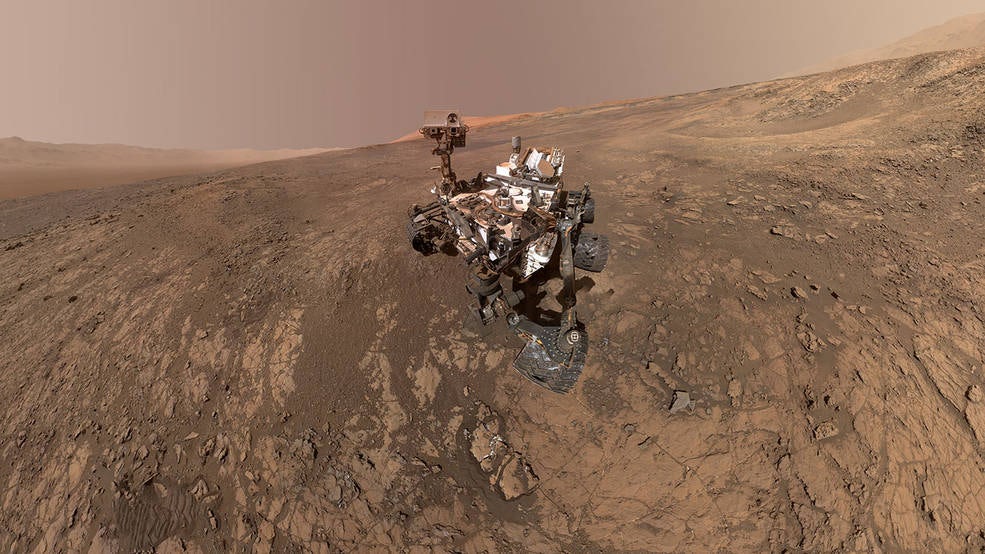NASA’s Curiosity rover has passed yet another impressive milestone, having spent 2,000 Martian days exploring one of the most enigmatic and fascinating worlds populating our solar system. Following an ambitious descent through Mars’ tenuous atmosphere in August 2012, Curiosity has been slowly but deliberately trundling around a 96-mile-wide (154 km) impact crater in search of evidence that the seemingly barren planet may have been hospitable to life in the distant past.

Curiosity has spent the entirety of its operational life exploring Gale Crater, which, based on geological evidence collected by the rover back in 2013, once played host to an ancient freshwater lake. The discovery was met with a chorus of excitement, as the presence of water is considered one of the key ingredients needed for the emergence of microbial life.
This is just one example of the countless insights into the Red Planet’s geological and atmospheric environment afforded by the impressive scientific capabilities of the Curiosity rover.
A Martian day, known as a Sol, is just a little longer than its equivalent on Earth, lasting roughly 24 hours and 37 minutes. Curiosity has racked up an impressive tally of Sols on the Red Planet, but it still has a ways to go if it’s going to surpass NASA’s Opportunity rover, which is currently enjoying its 5,035 sol on the Martian surface.
Whilst Curiosity is starting to show signs of wear and tear from its arduous exploration of the Martian surface, the stoic rover has plenty of life in it yet. The next stint of Curiosity’s marathon mission will see it continue to ascend sloping terrain in order to reach a number of clay-rich rocks, and use a new drilling technique to take samples for its suite of scientific instruments.
Curiosity’s science team is particularly excited about reaching and sampling the rocks, as the formation of the clay minerals in these rocks requires the presence of water. Examining these samples could provide clues as to how long water may have persisted on the surface of the Red Planet, and the potential of the ancient Martian environment to harbor life.
The next generation of NASA rover to be sent to the Red Planet – the Mars 2020 rover – closely follows some of the key design aspects of Curiosity, but will feature a new collection of cutting-edge scientific instruments. The highly anticipated rover is currently expected to launch in July 2020, and to arrive at Mars in February of 2021.












